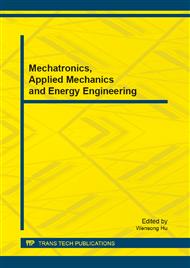p.205
p.211
p.217
p.222
p.228
p.232
p.237
p.242
p.245
Study of Changes the Tool Wear of the Cutting Tool Part of Stainless Steels ELC X04Cr18Ni9Ti during Drilling
Abstract:
The basic hypothesis of this article focuses on the study changes in the tool wear during drilling of stainless steels ELC X04Cr18Ni9Ti. The problem of drilling holes with diameter D=2 to 8 mm resides in the fact that 20 to 30% of these holes do not comply with prescribed requested requirements. This article presents the results of experiments focusing on the study of the damage process in helical drills with diameter d=8.0 mm when drilling into austenitic stainless steel ELC X04Cr18Ni9Ti. This study also includes an analysis of accompanying phenomena in the cutting zone by measuring some selected parameters.
Info:
Periodical:
Pages:
228-231
Citation:
Online since:
September 2013
Authors:
Keywords:
Price:
Сopyright:
© 2013 Trans Tech Publications Ltd. All Rights Reserved
Share:
Citation:


